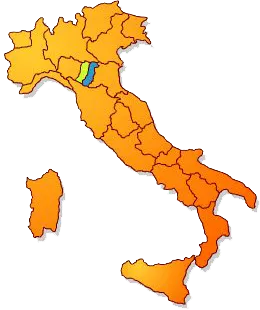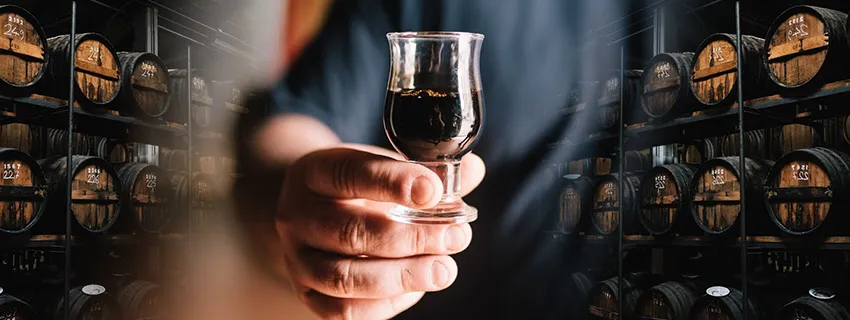Published:
Author: Antonio Maria Guerra
How Is Balsamic Vinegar Made?

How is balsamic vinegar made? A very ancient procedure, whose origins date back to the era of the pharaohs, handed down from father to son, and used still today by the most traditional producers of this specialty. Enjoy the reading!

How balsamic vinegar is made?
Here follows the procedure used to make Balsamic Vinegar of Modena PGI (click here for the printable version).

01. Harvest of the grapes produced from the seven authorized and certified vines.

02. ‘Pressing’: the grapes are pressed to get the ‘must’. This is cooked and/or concentrated until the density established in the specification is reached.

03. The must is mixed with wine vinegar (min. 10%), and with some other vinegar aged at least 10 years (*1). Thanks to selected bacterial colonies, acetification takes place. (*2)

04. The mixture of raw materials is ready for ‘refinement’ (min. 60 days) and, eventually, ‘aging’ (*3): these steps take place barrels made of fine woods such as oak, chestnut, juniper and mulberry.

05. The product undergoes extensive laboratory tests to get the ‘certification’ attesting its quality.

06. The vinegar is ready for the last step, the ‘bottling’.
Notes:
*1: It’s also possible to add a small quantity of caramel as a colorant;
*2: Grafting of acetobacteria colonies useful in the maturation and aging processes;
*3: If aging lasts at least three years, the product is considered ‘aged’;
Let’s find out the fascinating origins of balsamic vinegar, as well as a large number of information and interesting facts. To read the article, please click on this LINK.
How is balsamic vinegar made? Printable infographic.
Click HERE to view (and, eventually, download) a printable infographic showing the steps necessary to produce the famous Italian specialty.

The grapes.
The Traditional Balsamic Vinegar of Modena PDO and that of Reggio Emilia are produced with must from the grapes of the most famous local vines: Trebbiano and Lambrusco above all. To produce Balsamic Vinegar of Modena PGI, grapes from only seven vines are used, that is, in addition to Lambrusco and Trebbiano, Sangiovese, Ancellotta, Fortana, Montuni and Albana.

Balsamic vinegar: the production areas.
 The original Balsamic Vinegar of Modena and Traditional Balsamic Vinegar (from Modena and from Reggio Emilia), must meet a series of requisites (*1). Among these, their respective production areas:
The original Balsamic Vinegar of Modena and Traditional Balsamic Vinegar (from Modena and from Reggio Emilia), must meet a series of requisites (*1). Among these, their respective production areas:
Balsamic Vinegar of Modena PGI: according to Article 3 of the Product Specification Document, its production “must be carried out in the administrative territory of the provinces of Modena and Reggio Emilia”. According to Article 5, “the production stages that must take place in the geographical area of origin are the assembly of the raw materials, the processing, the refinement and/or the aging in wooden containers”. The other stages, such as bottling, can take place outside these territories.
Read more
Traditional Balsamic Vinegar of Modena PDO: According to Article 3 of the Product Specification Document, the grapes used to make the specialty “must be produced in the traditional territory of the Province of Modena”. According to Article 5, “the processing, mandatory aging and bottling operations” must also take place in the same territory.
Traditional Balsamic Vinegar of Reggio Emilia PDO: According to Article 3 of the Product Specification Document, the grapes used to make the specialty “must be produced in the traditional territory of the Province of Reggio Emilia”. According to Article 5, “the processing, mandatory aging and bottling operations” must also take place in the same territory.
Note:
*1: These requisites can be found in their product specifications documents.

Calories and nutritional values.
Fifteen grams of Balsamic Vinegar of Modena PGI (one portion) contains about twenty-two calories. The same quantity of the Traditional type (from Modena or Reggio Emilia) contains almost twice as much.
In addition to water, this specialty contains carbohydrates, proteins and mineral salts. Fat is not present.


The bottle of Traditional Balsamic Vinegar.
Traditional Balsamic Vinegar of Modena PDO can be marketed exclusively in a particular type of bottle, designed in 1987 by the famous Italian automotive designer Giorgetto Giugiaro to become a distinctive element of the product. Bottling can only take place in a center authorized by the Ministry of Agriculture.

The ‘balsamic sauces’.
There are some condiments on the market that, although cannot be considered Balsamic Vinegar, are prepared with a similar technique. These are generally sauces made from cooked must and, as such, called ‘balsamic sauces’. In this regard, it should be remembered that the name ‘Balsamico’ can be used only for the vinegar produced by the Consortia of Modena and Reggio Emilia.

Books: Il Balsamico, the black gold of Modena.
To deepen the knowledge of Balsamic Vinegar finding out all its charm, we recommend reading the book ‘Il Balsamico, the black gold of Modena’, patronized by both the Protection Consortia. It will be possible to buy it shortly on the Artioli Editore 1899 website.
Copyright information.
The images displayed in this page belong to WebFoodCulture, to the Consorzio Tutela Aceto Balsamico Tradizionale di Modena DOP ant to the Consorzio Tutela Aceto Balsamico Tradizionale di Reggio Emilia.


